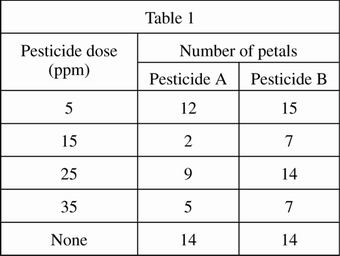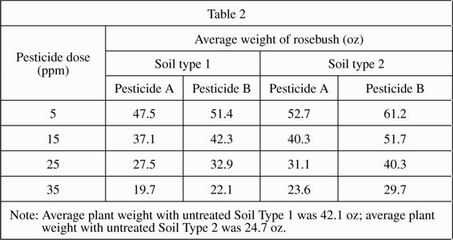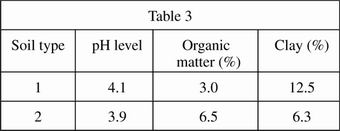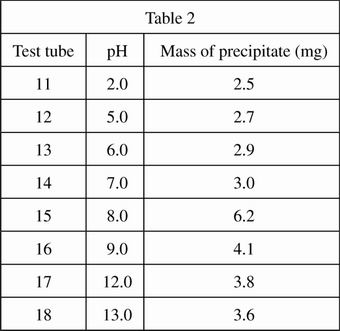
ACT Science Practice Test 49
Đề thi nằm trong bộ sưu tập: Tuyển Tập Bộ Đề Thi Đại Học Hoa Kỳ (ACT) - Có Đáp Án Chi Tiết
Số câu hỏi: 11 câuSố mã đề: 1 đềThời gian: 1 giờ
209,281 lượt xem 16,092 lượt làm bài
Xem trước nội dung:
PASSAGE V
Aphids are small plant-eating insects known to feed on rosebushes. In the cultivation of roses, certain pesticides are often applied when the presence of aphids is detected. However, sometimes the flowers that are treated with the pesticides are not as vibrant or fragrant as those that did not receive the pesticide treatment. Two experiments were conducted to study the effects of certain pesticides on rosebushes.
Experiment 1
A gardener filled 125 pots with Soil Type 1. No pesticide was added to the soil in 25 pots. The other pots were divided into four groups of 25 and the soils in each group were treated with 5, 15, 25, or 35 parts per million (ppm) of either Pesticide A or Pesticide B. All other factors were held constant. Fully grown rosebushes with buds but no flowers were planted after the pesticide was placed in the soil. After 30 days the rosebushes were uprooted, sun-dried, and the total number of petals produced by the bushes was counted. The results are shown in Table 1.

Experiment 2
Experiment 1 was repeated with 100 pots of Soil Type 1 and 100 pots of Soil Type 2. The same pesticide doses and type and number of rosebushes were used. All other factors were held constant. After 30 days the rosebushes were uprooted and weighed. The results are shown in Table 2.

Information on the composition of the two soil types used is given in Table 3.

Which of the following sets of rosebushes served as the control in Experiment 1?
Rosebushes grown in soil with no pesticide added
Rosebushes grown in soil treated with 15 ppm of Pesticide A
Rosebushes grown in soil treated with 15 ppm of Pesticide B
Rosebushes grown in soil treated with 35 ppm of Pesticide A
Which of the following, if true, best explains why the pesticides were applied to the soil as opposed to being placed directly on the rosebushes?
Pesticides are never applied to the plants when treating aphids or other pests.
Aphids are not affected when a pesticide is applied directly to the soil.
The experiments were testing how water levels affect growth patterns.
Rosebushes generally die when pesticides are directly applied to them.
Assume that there is a direct correlation between plant weight and the number of petals on the flowers. If a rosebush was grown in Soil Type 2, one would predict that the number of petals would be lowest under which of the following conditions?
Pesticide B at 35 ppm.
Pesticide A at 35 ppm.
Pesticide B at 25 ppm.
Pesticide A at 15 ppm.
Assume that a rosebush was grown in soil treated with varying doses of a third pesticide (Pesticide C). Based on the results of the experiments, what prediction, if any, about the effect of Pesticide C on the growth of this rosebush can be made?
Pesticide C would have no impact on the growth of the rosebushes.
Pesticide C would interfere with the growth of these rosebushes by making them smaller.
Pesticide C would interfere with the growth of these rosebushes by making them less fragrant.
No prediction can be made on the basis of the results.
The results of Experiment 2 indicate that, at every pesticide dose, average plant weight was lowest under which of the following conditions?
Pesticide B and Soil Type 1
Pesticide A and Soil Type 1
Pesticide B and Soil Type 2
Pesticide A and Soil Type 2
PASSAGE VI
Dopamines serve as enhancers or catalysts (a substance that initiates or increases the rate of impulses during a chemical reaction, but is not depleted during the process) to certain reactions involved in the activity of human thought. The dopamine intropin is involved in the stimulation of the neurotransmitters in the brain when thought is initiated. A student investigated the effects of dopamine activity on a specific neurotransmitter.
Experiment 1
To each of 10 test tubes, 7 milliliters (mL) of a peptide (a neurotransmitter) solution was added. Two mL of an intropin solution was added to each of Tubes 1-9. Tube 10 received 2 mL of water without intropin. The tubes were then stirred at a constant rate in water baths at various temperatures and incubated (heated) from 0 to 15 minutes (min). At the end of the incubation period, 0.3 mL of NaCl solution was added to each tube. The NaCl stopped the reaction between the intropin and the peptide. The precipitates, solids formed in a solution during a chemical reaction, which in this case were caused by the reaction of NaCl and the peptide, were removed from the tubes and dried. The masses of the precipitates, in milligrams (mg), were measured to determine the relative amount of enhancer that remained in the tube. The results are shown in Table 1.

Experiment 2
Peptide solution (8 mL) was added to an additional 8 test tubes to which 2 mL of intropin solution was then added. The tubes were incubated at 10 degrees Celsius and stirred at a constant rate for 15 min. The effect of acidity on the neurotransmitter was observed by varying the acidity levels (using the pH scale). The relative amount of neurotransmitter present in each tube was determined in the same manner as Experiment 1, by adding NaCl solution to each test tube. The results are in shown in Table 2.

In Experiment 1, which of the following conditions allowed for the large amount of precipitate in Tube 1?
Lack of intropin.
Higher temperature.
Lack of water.
Shorter incubation period.
In which of the following ways did the designs of Experiments 1 and 2 differ?
A larger volume of the peptide solution was used in Experiment 2 than in Experiment 1.
The temperature was held constant in Experiment 1 and varied in Experiment 2.
No NaCl was added after incubation in Experiment 2, but it was in Experiment 1.
The remaining fluid level was measured in Experiment 1 but not in Experiment 2.
Which of the following hypotheses about the effects of pH on intropin activity is best supported by the results of Experiment 2? As the pH of the solutions increases from 2 to 13, the effectiveness of intropin:
increases only.
decreases only.
increases, then decreases.
remains the same.
Suppose that NaCl had been added immediately to Tube 5 with no incubation period. Based on the results from Experiment 1, the best prediction about the amount of precipitate formed would be:
4.1 mg.
3.5 mg.
2.1 mg.
1.4 mg.
According to Table 1, which of the following combinations of water bath temperature and incubation time yielded the greatest amount of precipitate?
25°C, 5 min
25°C, 10 min
35°C, 5 min
35°C, 10 min
According to the results of both experiments, one can predict that the LEAST amount of precipitate would be formed if tubes were incubated for 15 min under which of the following conditions?
20°C at pH of 2.0
20°C at pH of 6.0
30°C at pH of 2.0
30°Cat pH of 6.0
